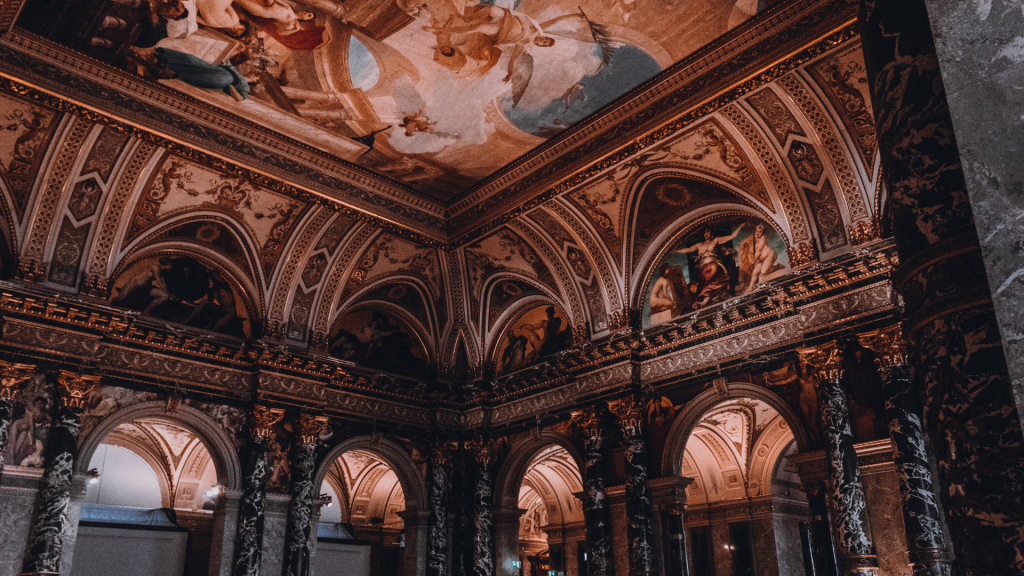The Baroque era was a time of tremendous cultural, political, and social transformation. It was also a time of remarkable artistry and creativity, with artists around the world pushing boundaries to explore new techniques and styles. This blog post will dive into the rich history of Baroque art, examining its defining characteristics, major works, and lasting influence on today’s art world. From Bernini’s majestic sculptures to Caravaggio’s dramatic paintings, come explore the beauty of this remarkable era!
Introduction to the Baroque Art
Art has always been a reflection of the society of its time and the Baroque period was no exception. The artists of this era were challenged to create works that would capture the grandeur, power, and opulence of the age.
The word “baroque” comes from the Portuguese word “barroco” meaning misshapen pearl. It was first used to describe architecture and later applied to other art forms including painting, sculpture, and music.
The Baroque period spanned from approximately 1600 to 1750 and was a time of great change. Europe was emerging from the Renaissance and grappling with religious conflict.
Science was beginning to challenge traditional beliefs and there were great advances in technology and exploration. This is reflected in the art of the time which often features dramatic lighting, bold colors, and dynamic compositions.
Baroque artists sought to shock and awe their viewers with their work. They wanted to create an emotional response and provoke thought about important issues of the day.
Many of the greatest masters of this period including Caravaggio, Bernini, and Rembrandt created some of their most iconic works during this time.
So what exactly is Baroque art? And why is it still so popular today? Keep reading to find out more about this fascinating period in art history.
The Origin of Baroque Art
The Baroque era is one of the most well-known and celebrated periods in art history. Though often associated with the extravagance and excess of the Catholic Church, the Baroque actually encompasses a wide range of styles and movements that emerged throughout Europe in the late 16th and early 17th centuries.
In general, Baroque art is characterized by its ornate style, dramatic lighting and use of space, and intense emotionality. These elements can be seen in the works of some of the most famous Baroque artists, such as Caravaggio, Bernini, and Rembrandt.
The origins of the Baroque can be traced back to several factors, including the Protestant Reformation, the Counter-Reformation, and the rise of Absolutism. In response to the Reformation’s challenge to traditional Catholic dogma, the Church embarked on a major campaign to reassert its authority through art. This led to the development of a more dramatic and emotional style of religious art, which was then adopted by secular rulers as a way to communicate their own power and status.
The Baroque era was also marked by great advances in science and technology, which had a profound impact on artistic production. The invention of Perspective drawing made it possible for artists to create incredibly realistic images that appeared to recede into infinite space. Additionally, new printing technologies allowed for the mass production of prints and books, making art accessible to a wider audience than ever
Major Artists of the Baroque Era
Some of the most renowned artists of the Baroque era include Caravaggio, Bernini, and Rembrandt. These artists helped to shape the Baroque period with their unique styles and subject matter.
Caravaggio was a master of chiaroscuro, or the use of light and dark to create a sense of depth and drama. His paintings often featured religious or mythological scenes, which were rendered in a realistic and gritty style.
Bernini was another prominent artist of the Baroque era, known for his opulent sculptures and architecture. He often incorporated movement and emotion into his work, creating dramatic scenes that captured the viewer’s attention.
Rembrandt was a Dutch painter who is considered one of the greatest artists of all time. He is known for his masterful use of light and shadow, as well as his emotive portraits.
These are just a few of the major artists who helped to define the Baroque era. Their work continues to inspire artists today and their legacy will be remembered for generations to come.
Characteristics of Baroque Art
Baroque art is characterized by its grandeur, drama, and movement. It emerged in the late 16th century and reached its peak in the 17th century.
Baroque artists sought to evoke emotion and capture the human experience. They used light and shadow to create a sense of depth, and they often incorporated elements of nature into their work.
Their paintings were highly detailed and often featured rich colors and elaborate compositions. Baroque sculpture was also characterized by its realism and its use of light and shadow to create a sense of movement.
The baroque period was one of great creativity, and the artists of this era left a lasting legacy.
Cultural Influences on Baroque Art
The Baroque period was one of great cultural upheaval. In the early years of the 17th century, the Protestant Reformation was in full swing and Europe was wracked by religious wars. The continent was also coming to grips with the discovery of the Americas and the resulting trade in goods and people. Against this backdrop, artists were creating some of the most dramatic, opulent and emotionally charged works in history.
Baroque art is often characterized by grandeur, drama, movement and emotion. This is partly due to the religious and political turmoil of the times, but it is also a reflection of the growing wealth and power of certain social groups. The Catholic Church, for example, was a major patron of Baroque art, commissioning works that glorified God and the Church while reinforcing its own authority. The newly rich merchant class also supported artists, often commissioning portraits that displayed their wealth and status.
All these factors combined to create an era of extraordinary artistic creativity. From dramatic paintings and sculpture to lavish architecture and music, the Baroque period left a lasting mark on Western culture.
Popular Baroque Paintings
There are countless popular Baroque paintings that have stood the test of time and remain some of the most iconic and beloved works of art in the world. Perhaps the most famous Baroque painting of all is The Last Supper by Leonardo da Vinci, painted between 1495 and 1498.
This incredible work captures the moment when Jesus Christ reveals to his disciples that one of them will betray him. Another popular Baroque painting is The Scream by Edvard Munch, painted in 1893. This work conveys a sense of existential angst and terror that remains relevant to this day.
Other notable popular Baroque paintings include The Anatomy Lesson of Dr. Nicolaes Tulp by Rembrandt van Rijn, painted in 1632, and David with the Head of Goliath by Caravaggio, painted in 1610. Both of these works are incredibly powerful and moving, and continue to resonate with viewers centuries after they were first created.
There are literally hundreds of other popular Baroque paintings out there – far too many to list here! But these are just a few examples of the rich history and legacy of this truly remarkable era in art.
Legacy and Influence of the Baroque Period
The Baroque period was one of the most influential periods in art history. The style of the period is characterized by its ornate, dramatic, and emotional quality. The Baroque period saw the rise of some of the most famous artists in history, such as Rembrandt, Vermeer, Caravaggio, and Rubens.
These artists created masterpieces that are still revered today. The Baroque period also saw the development of new techniques and styles that would go on to influence subsequent generations of artists.
The Baroque era has left us with a wealth of art that continues to inspire and delight viewers. From the grandiose palaces of Italy to the intimate galleries of France, this remarkable period is an essential part of our cultural heritage.
With its bold use of color and light, its intricate designs, and its timeless themes, there is something for everyone within this rich history. As we explore the many works from this influential period, let us marvel at its beauty and celebrate all it has given us.

